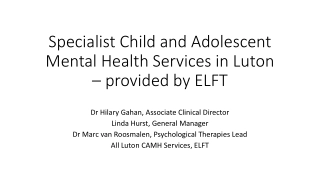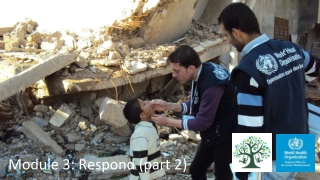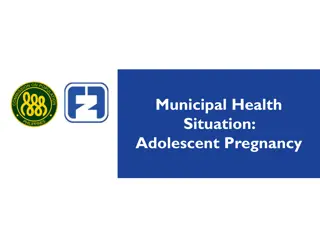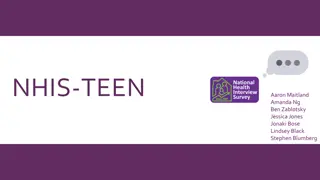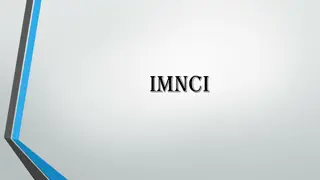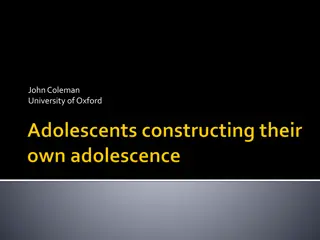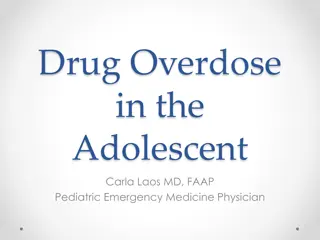
Collaborative Approach to Child and Adolescent Behavior Management
Explore the role of case management in treating disruptive behaviors in children and adolescents. Understand the critical considerations and interventions for effective client interaction. Discover a comprehensive treatment plan involving behavioral health providers, case managers, and objectives for skill development and coping mechanisms.
Download Presentation

Please find below an Image/Link to download the presentation.
The content on the website is provided AS IS for your information and personal use only. It may not be sold, licensed, or shared on other websites without obtaining consent from the author. If you encounter any issues during the download, it is possible that the publisher has removed the file from their server.
You are allowed to download the files provided on this website for personal or commercial use, subject to the condition that they are used lawfully. All files are the property of their respective owners.
The content on the website is provided AS IS for your information and personal use only. It may not be sold, licensed, or shared on other websites without obtaining consent from the author.
E N D
Presentation Transcript
Child and Adolescent Management A Collaborative Approach to Care June 30, 2018 * Tex-CHIP Training Series
Role of Case Management in the Treatment of Disruptive Behaviors in Children and Adolescents
Understanding Provider Role in Children and Adolescents Case managers help the family identify the causes of the client s behaviors by looking at the underlining needs within the family s history. Case managers provide one-on-one skills training to help the client work on his/her goals of behavior change through different approaches of modeling, role-playing, and performance feedback. Case managers can also link or refer the client and family to other resources in the community to ensure the client has a collaborated approach in treatment. Case managers can work one-on-one with the parent using the Defiant Child curriculum or the Nurturing Parenting curriculum.
Considerations when Interacting with Clients Remember to meet the client where they are in the process of treatment. Do not force them to move forward if they have not completed the first step in the skill they are learning. Don t tell the client what to do but rather lead them to a positive conclusion by offering scenarios that mirror their own behaviors. Teach clients about the ABC s of their actions so they can see the antecedents, behaviors, and consequences of their decisions.
Our Treatment Plan Healthcare Domain: Behavioral Health Provider: Case Manager Objective: Goals: Intervention: a) CM will teach skills from the Skillstreaming curriculum s skills groups including but not limited to those chosen by Sam and Marta: Group I: Beginning Social Skills and Group V: Alternatives to Aggression. Provide alleviation of disruptive behaviors as indicated by: (a) Sam will learn that he has the power to control his aggression at home and with others. (a) Sam being able to identify and utilize coping skills when he is feeling stressed or angry per self-report b) Psychiatrist will provide psychiatric services and medication management as needed to Sam in the office to assist him in coping with the symptoms of his diagnosis. (b) Sam will feel that he can receive attention from his mom without being disruptive. (b) Marta being able to find time for herself and using self-care to help relieve the stress she is feeling c) Marta will attend monthly parenting groups to help implement the Defiant Child curriculum and the Nurturing Parenting curriculum at home and identify ways to have time for herself. (c) Marta remembering to not challenge the requests made by Sam AEB utilizing the Defiant Child and Nurturing Parenting curriculums (c) Marta will feel that she can have time for herself. (d) Sam being able to control his disruptive behaviors and follow Marta s behavior charts and chore charts d) Marta will take Sam to all scheduled appointments and update paperwork as needed. Marta will reinforce skills at home in order to help Sam meet goal. d) CM will provide routine case management to link family to community resources as needed. CM will meet with family quarterly to ensure Sam is making progress in treatment and to determine whether the plan needs to be modified to address new concerns.
Measuring Outcomes/ Success During quarterly reviews [90 day periods], Marta, Sam, and CM will meet to update paperwork and ensure Sam is making progress in treatment. CM will complete a CANS assessment every quarter to measure the progress of the family as well as the needs and strengths of both LAR and client to help implement them into the treatment plan or to modify treatment plan accordingly. Over the quarter, Sam will demonstrate skills from the Skillstreaming curriculum as evidenced by learning coping skills to utilize when angry or stressed, including counting to 10, taking a deep breath, and using his turtle shell skill, instead of throwing tantrums over the next 90 days per self-report. Over the quarter, Sam will demonstrate skills from Barkley s Defiant Child curriculum as evidenced by following Marta s newly implemented chore chart and behavior chart without defiance as shown by following Marta s instructions without challenging requests over the next 90 days per Marta s report.
Communication from Counselors Monthly staffing between the case manager and counselor is particularly important for client s continued success. During staffing, the case manager and counselor can discuss the progress both individuals have seen with client during their separate sessions. By integrating counseling techniques into the skill sessions, the case manager can help the client implement the strategies more efficiently.

